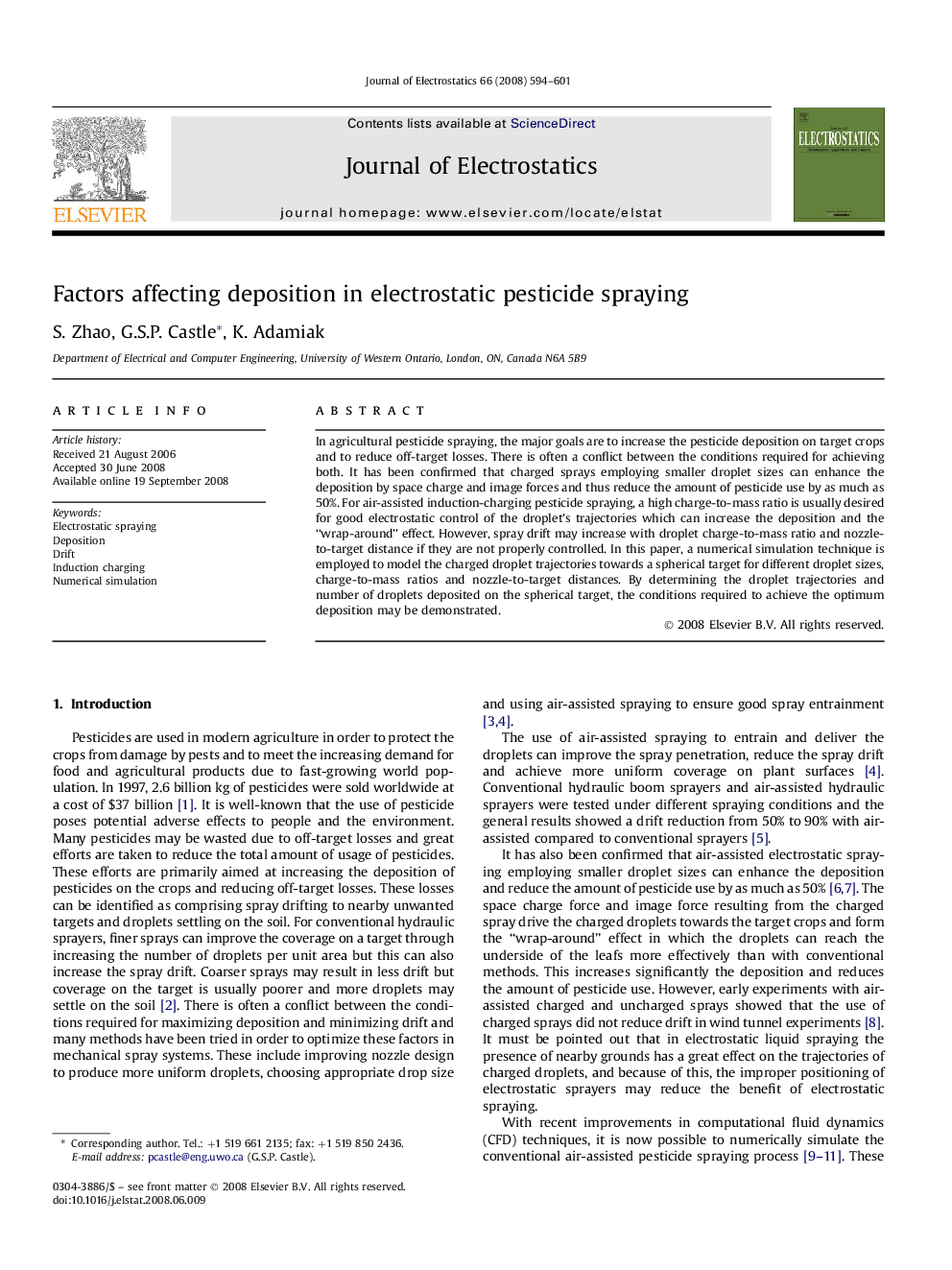| Article ID | Journal | Published Year | Pages | File Type |
|---|---|---|---|---|
| 726579 | Journal of Electrostatics | 2008 | 8 Pages |
In agricultural pesticide spraying, the major goals are to increase the pesticide deposition on target crops and to reduce off-target losses. There is often a conflict between the conditions required for achieving both. It has been confirmed that charged sprays employing smaller droplet sizes can enhance the deposition by space charge and image forces and thus reduce the amount of pesticide use by as much as 50%. For air-assisted induction-charging pesticide spraying, a high charge-to-mass ratio is usually desired for good electrostatic control of the droplet's trajectories which can increase the deposition and the “wrap-around” effect. However, spray drift may increase with droplet charge-to-mass ratio and nozzle-to-target distance if they are not properly controlled. In this paper, a numerical simulation technique is employed to model the charged droplet trajectories towards a spherical target for different droplet sizes, charge-to-mass ratios and nozzle-to-target distances. By determining the droplet trajectories and number of droplets deposited on the spherical target, the conditions required to achieve the optimum deposition may be demonstrated.
